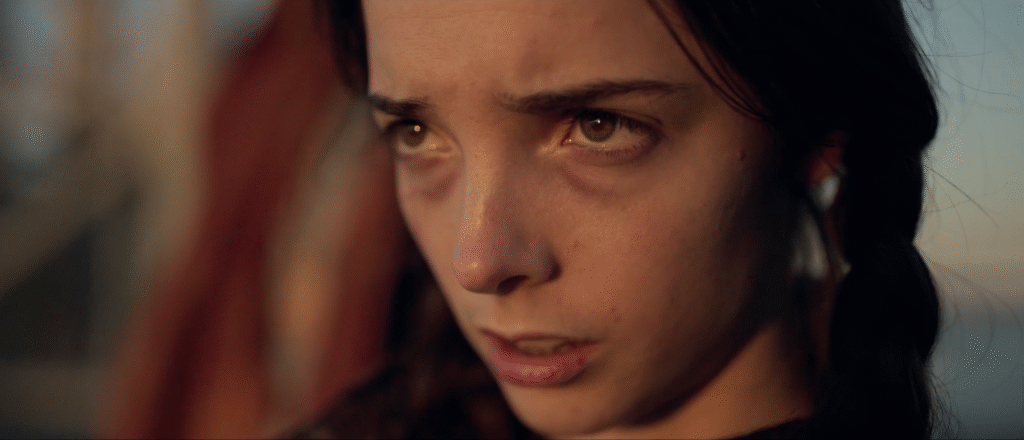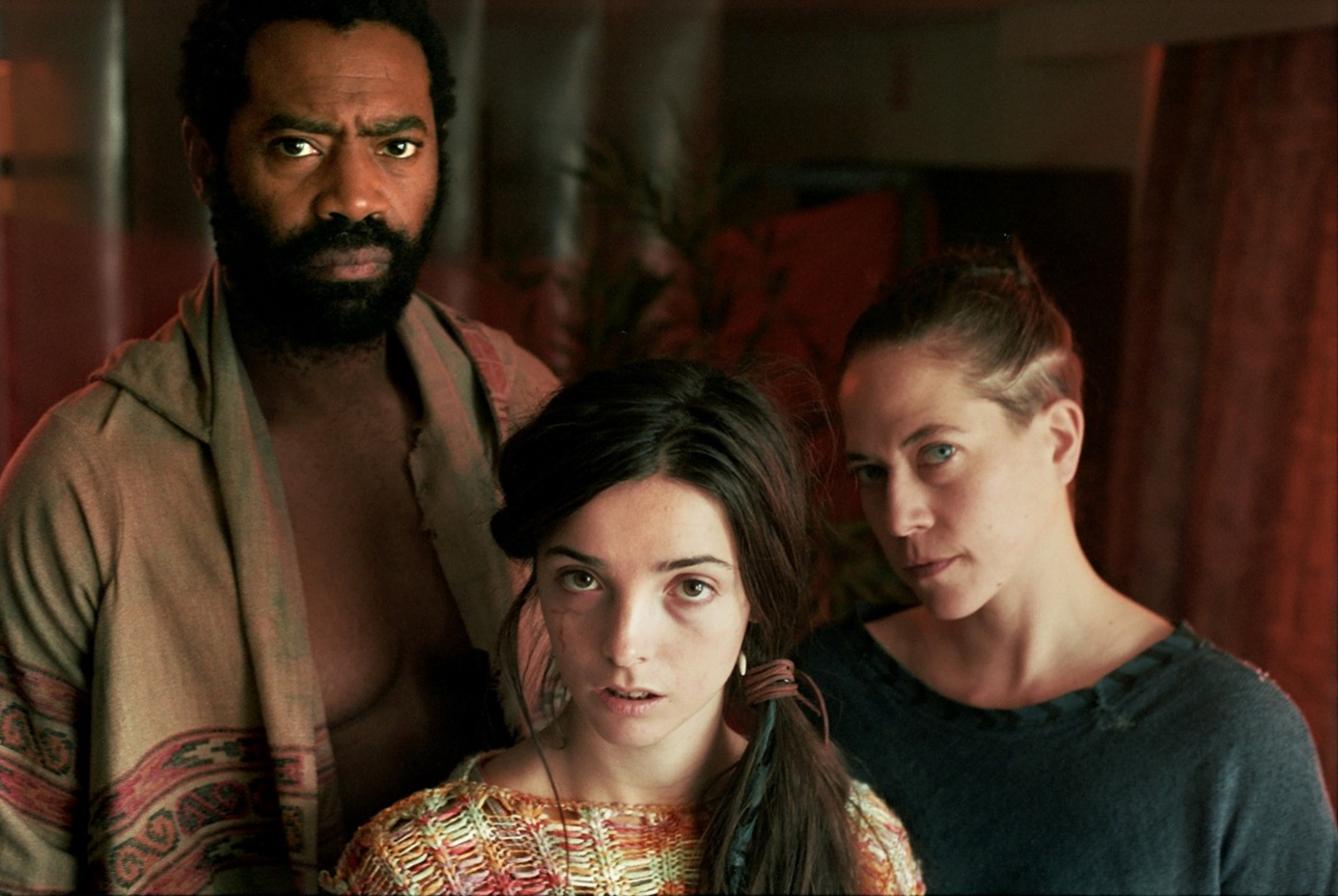The Wolf, The Fox & The Leopard (2025): Action in a Complicated Meaningless World
We watched The Wolf, The Fox & The Leopard as part of our coverage of Tribeca Film Festival 2025 and were impressed. Filmmaker David Verbeek delivers a strong early entry into a body of feature films that showcases not only directorial craft but skillful writing.
Gorgeously narrated Japanese prose introduces us to a boy with inner conflict and nuanced relationships who is destined to meet a girl. He argues with his girlfriend, exits their car and gets lost trying to find his way in the woods—another character in this story. Cornered by wolves, we figure this is his story and this must be the part where he is saved by the girl. Scene cut to his face with eyes open, not blinking, barely aware and with blood trickling across it. We hear the growling of wolves as he is shaken back and forth in bursts. And we follow his eyes to the last thing he sees. A wild girl squatting in the shadows. This was not his story.
A search party rescues the girl—named Wolf—as the prologue ends and the body of the story begins. Wolf’s rescue is the story’s inciting incident. A researcher nurtures Wolf, strives to extinguish her aggression and transform her into a human. We gather she views Wolf as a sort of Tarzan. However this period is merely the brief set up to the key incident that transitions the story into the conflict that will define the majority of its runtime. Wolf is saved by two masked figures—eco-preppers who take her to their home in the middle of the ocean, as they await an ecological armageddon.
That poetic, meaning rich narration introduces us to Mother and Father, they call themselves. They give Wolf a new name. The pair see themselves as being different from the researcher and the human society the researcher occupies while perfectly failing to see the ways in which they, and their own miniature society, are similar. They are blind to it because they are of human society despite their isolation. Wolf can see it because she is of the woods. And she is now trapped floating on the ocean, yet another character. The only thing for which Wolf yearns is the one from whom she’s been separated.
A series of events leads to Wolf gradually realizing that Mother is actually Fox while Father is Leopard, a realization colored by the same idealized narration that culminates in the plot point at the end of Act Two. They don’t know their own natures as well as she does. Just like they don’t realize the degree to which they are still human disruptors of the natural world. Eventually Wolf is removed from this setting the same way she’s been removed from her last two settings—by humans coming to rescue her.
Wolf is gone and we meet her all over again, now with another new name. She’s a human this time and we don’t get to know her setting with any intimacy at all. It’s slowly that we realize she is still very different from the other people around her, though. We see the degree to which she’s trained more than she is educated. We also see the immediacy with which she uses her physical presence as her means of engaging in social situations. The most interesting part of this by far is Verbeek’s illustration of her experiencing a symphony for the first time. How would nuanced, intentionally evocative noises sound to a mind that doesn’t think in language? What does it mean that being well trained causes her to experience it this way? What does it say about you? Verbeek didn’t need to gift us these questions but he did.
She then encounters an ornate, idealistic work of prose, as we learn something crucial about the researcher’s meta relationship to the story. By comparison Wolf’s life feels banal and empty. The hyper semiotic prose doesn’t align with how she feels about the human life she’s now integrated with. This place to her is complicated and meaningless. So she sets about seeking out Fox and Leopard, who reveal themselves to be selfish power hungry hypocrites. When she finds the one who wrote the prose, she actualizes as Wolf, realizes she’s in a city—the last character we are, if only briefly, introduced to—and decides to return to the woods. The final shot affirms the toxicity of humanity for nature as nature comes to kill itself. Whereas Tarzan becomes human and goes back to save the animals, Wolf realizes she’s an animal and goes back to where she belongs. This is an epilogue with a satisfying beginning, middle and end.
Verbeek can write. The way Wolf feels about life in a society, and the way Verbeek gives us new context to re-color our understanding of the story, makes a meta point about our own relationship with society.
How many of the problems of modernity are the result of humanity being psychologically pre-modern?
How much of our dissatisfaction with the experience of life results from our impulse to seek meaning where there is only action?
These aren’t questions that necessarily need an answer. But you can give them your own by watching this gorgeous movie for yourself.
If you enjoyed this article, please consider becoming a patron of Hyperreal Film Journal for as low as $3 a month!



Hi my name’s AP and I live in Bushwick where I spend most of my free time on my creative writing projects. I believe good film is art, good art is philosophy and good philosophy is science. The best kind of art revels in the play of thought and emotion.
Talk to me about The Matrix, Sword of Doom, The Human Condition Trilogy or anything by Denis Villeneuve.
More of my thoughts here. https://medium.com/@DiegeticThoughts